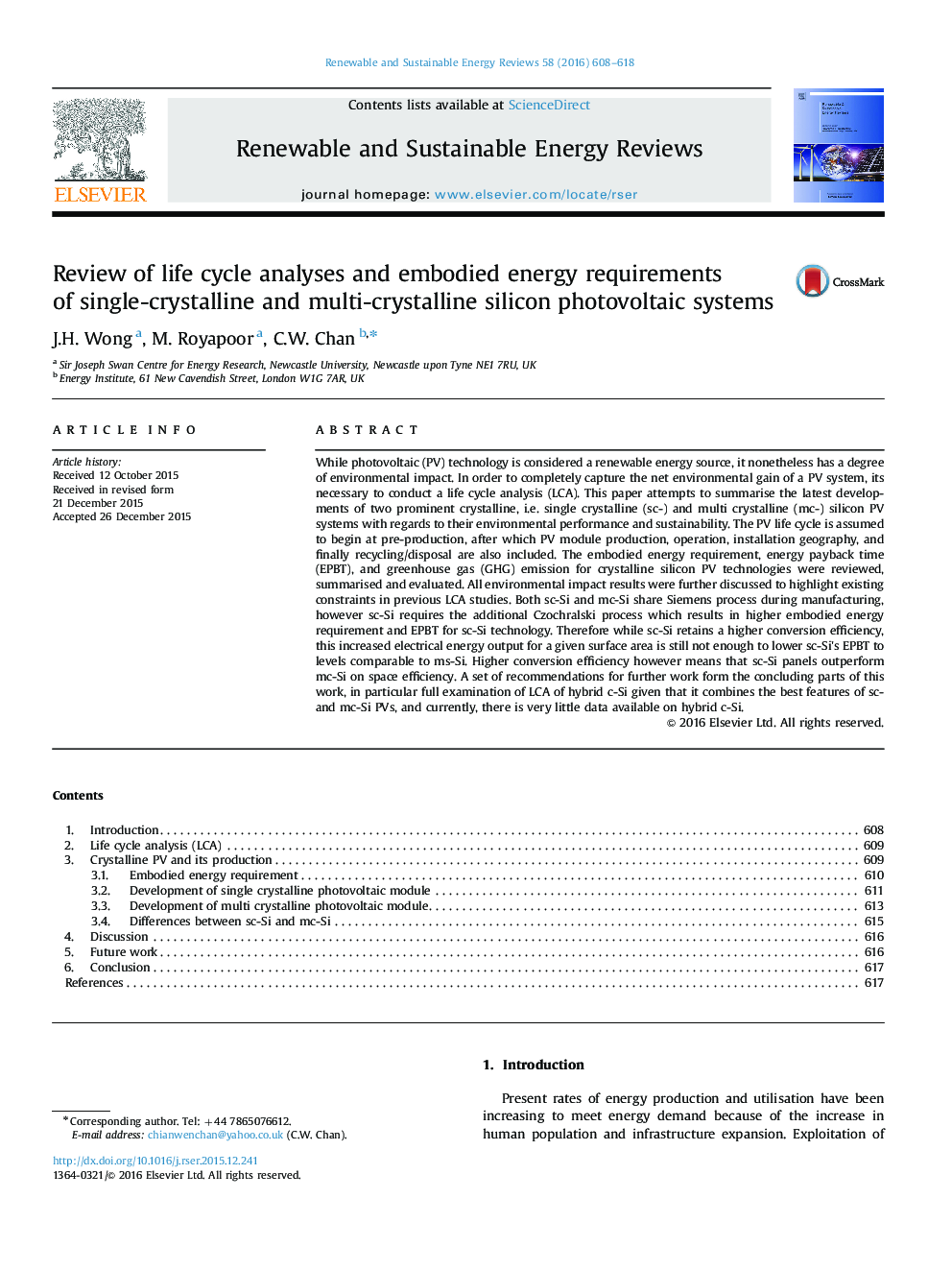| Article ID | Journal | Published Year | Pages | File Type |
|---|---|---|---|---|
| 8114211 | Renewable and Sustainable Energy Reviews | 2016 | 11 Pages |
Abstract
While photovoltaic (PV) technology is considered a renewable energy source, it nonetheless has a degree of environmental impact. In order to completely capture the net environmental gain of a PV system, its necessary to conduct a life cycle analysis (LCA). This paper attempts to summarise the latest developments of two prominent crystalline, i.e. single crystalline (sc-) and multi crystalline (mc-) silicon PV systems with regards to their environmental performance and sustainability. The PV life cycle is assumed to begin at pre-production, after which PV module production, operation, installation geography, and finally recycling/disposal are also included. The embodied energy requirement, energy payback time (EPBT), and greenhouse gas (GHG) emission for crystalline silicon PV technologies were reviewed, summarised and evaluated. All environmental impact results were further discussed to highlight existing constraints in previous LCA studies. Both sc-Si and mc-Si share Siemens process during manufacturing, however sc-Si requires the additional Czochralski process which results in higher embodied energy requirement and EPBT for sc-Si technology. Therefore while sc-Si retains a higher conversion efficiency, this increased electrical energy output for a given surface area is still not enough to lower sc-Si׳s EPBT to levels comparable to ms-Si. Higher conversion efficiency however means that sc-Si panels outperform mc-Si on space efficiency. A set of recommendations for further work form the concluding parts of this work, in particular full examination of LCA of hybrid c-Si given that it combines the best features of sc- and mc-Si PVs, and currently, there is very little data available on hybrid c-Si.
Related Topics
Physical Sciences and Engineering
Energy
Renewable Energy, Sustainability and the Environment
Authors
J.H. Wong, M. Royapoor, C.W. Chan,
